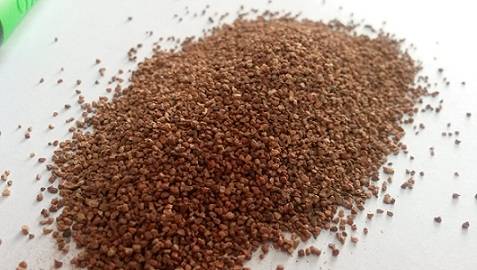Fuller’s Earth

Fuller’s Earth (also known as attapulgite, floridin, and bleaching clay) is a clay-like material made of hydrated aluminum silicates. Unlike ordinary clay, Fuller’s Earth is characterized by higher water content and a lack of plasticity. This substance may be of different colors: white, white with grey accents, pale pink, red, yellow, greenish-yellow, green or black. Such variation in color is caused by the impurities in the Fuller’s Earth. For example, a black color of this substance may be provided by a high content of organic substances and pink or red color by manganese.
Table 1 shows the approximate composition of Fuller’s Earth.
Table 1
Chemical composition of Fuller’s Earth
|
Component |
Content, % |
|
SiO2 |
53.42 |
|
Al2O3 |
10.06 |
|
Fe2O3 |
3.58 |
|
TiO2 |
0.52 |
|
CaO |
1.29 |
|
MgO |
9.18 |
|
Loss on ignition |
9.42 |
|
Chemically free water |
11.83 |
Fuller’s Earth is the natural earth being processed with water and then squeezed through a drain bushing with a large number of holes. The resuling substance is then dried, grinded and sifted to obtain the desired size of the Fuller’s Earth particles. Due to extruding, the degree of the sorbent’s adsorption is increased by approximately 30 %.
Deposits of Fuller’s Earth
Deposits of Fuller’s Earth are located in such countries as the USA (Florida, Virginia, Alabama, California), France (Montmorillon), Germany, Japan, and Hungary (Tokaj). As of 2010, the USA, Spain, Senegal, Mexico, and Japan were considered to be the world leaders in production of Fuller’s Earth with the USA accounting for 70% of total world production.
Application Areas
Fuller’s Earth is proved to be a very valuable mineral due to its good adsorption properties. It has taken its name from the person who was engaged in cleaning cloths, known as a “Fuller.”
Even in the middle ages, people of Crimea used bleaching clay to remove grease from wool, to clean carpets or fabrics. Nowadays, Fuller’s Earth is widely applied in such industries as:
(1) oil industry:
- transformer oil reclamation: decoloration andrestoring of chemical characteristics;
- stabilization of oil products by removing tar-like substances;
- purification and decoloration of greasing oils;
- oil drilling (even a few percent of Fuller’s Earth is able to produce viscous suspensions).
(2) textile industry;
- removal of oil and grease from wool;
- used as bleaching material to produce fabrics.
(3) food industry;
- water purification;
- beverage products purification (wine, juice, vegetable oils).
(4) pharmaceutical industry;
- used as a binding agent while manufacturing drugs;
- adsorbs harmful substances while helping to prevent gastrointestinal diseases, injuries, poisonings and so on.
(5) paper industry (production of carbonless paper).
It is worth noting that industries use Fuller’s Earth that is dried or chemically processed.
